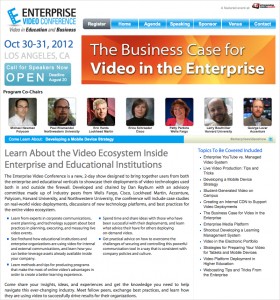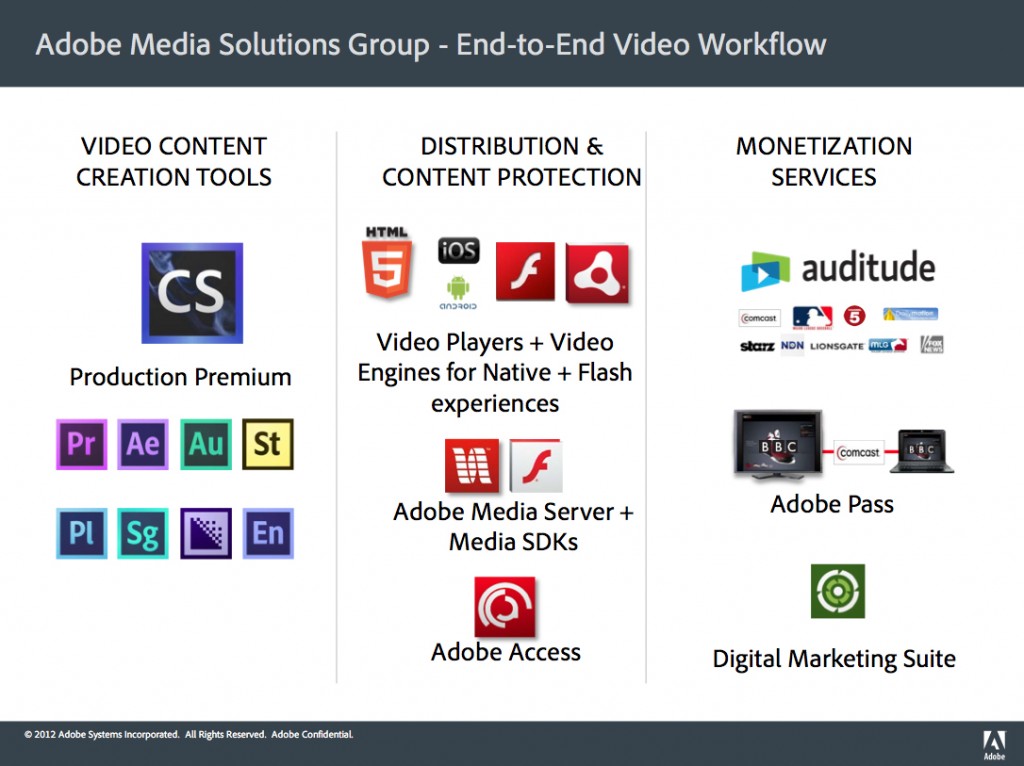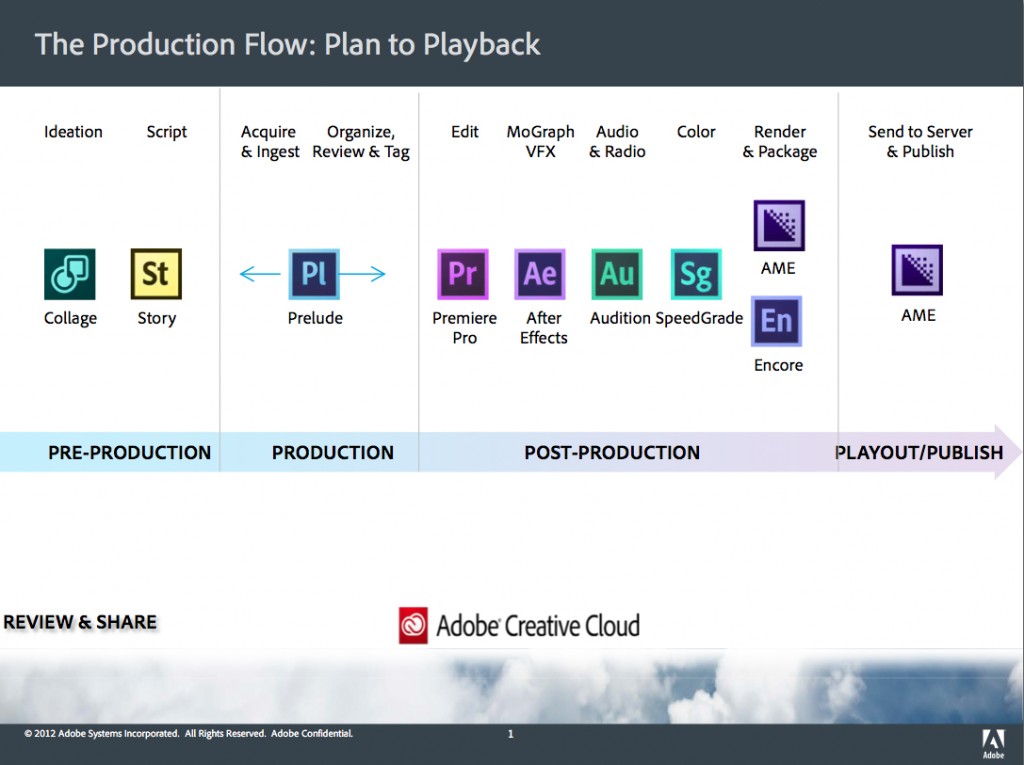Updated List Of Vendors In The Content Delivery and Transparent Caching Markets
It’s been awhile since I updated my list of companies connected to the content delivery market including vendors that offer CDN services, licensed and managed CDN platforms, transparent caching platforms and those carriers and telcos who are deploying these services. Since my last post on the subject, Akamai acquired Cotendo, Internap acquired Voxel, Technicolor sold off their video assets, XO Communications got into the market and other companies have come and gone.
This list is far from complete and I’m sure there are others I could include. For now, I’m not adding any P2P based services, mobile content delivery, commerce and advertising platforms or hosting providers that have pricing starting at $99 a month. When this list first started off, it was composed of just service based CDNs who offered video delivery and over time, the list has evolved to feature other technologies and platforms having to do with optimizing the delivery of web content.
While content delivery is a generic term and probably includes hundreds of vendors if you include all cloud based services, co-location companies, regional service providers, P2P networks and mobile platforms, I’ve tried to keep this list to vendors specifically tied to the delivery of video, be it as a service or platform for both On-net and Off-net applications.
But I do think this list needs to continue to expand so I am open to ideas and suggestions on adding new categories. I’m thinking of adding companies that offer FEO and DSA to the list as well, so I welcome you comments and suggestions. (To make the list easier to find on my blog, all you have to do is go to www.cdnlist.com for the latest update.)
CDN Service Providers
- 21ViaNet
- Accelia
- Activate.net (acquired by CMGI Oct. 1999)
- Abacast (has exited the video delivery business, focuses on radio streaming)
- Advection.net
- Akamai
- Amazon CloudFront
- BitGravity (acquired by Tata Communications Jan. 2011)
- Broadcast.com (acquired by Yahoo! April 1999)
- CacheFly
- Cable & Wireless (withdrew from the U.S. Nov. 2002, sold U.S. company to SAVVIS)
- ChinaCache
- Cidera (went out of buisness Jan. 2001, formerly named SkyCache)
- CDNetworks (exited the video delivery business in 2010, focuses on web acceleration)
- Cotendo (acquired by Akamai Nov. 2011)
- Digital Fountain (acquired by Qualcomm Feb. 2009)
- Digital Island (acquired by Cable & Wireless May 2001)
- EdgeCast
- EdgeStream (no real offering, vaporware)
- e-media (acquired by Streaming Media Corp. in 2002)
Fastweb(acquired by 21ViaNet in Sept. 2012)
- Globix (chapter 11 Jan. 2002, hosting/media services sold to QTS Oct. 2006)
- Grid Networks (merged with GMS April 2009)
- Highwinds
- iBEAM (went chapter 11 Oct. 2011, assets acquired by Williams Communications)
- INTERVU (acquired by Akamai Feb. 2000)
- Itiva (went out of business sometime in 2010)
- itv.net (acquired by PopCast in 1999)
- Limelight Networks
- Microcast (went out of business sometime in 2000)
- Mirror Image
- NetDNA
- Octoshape
- Panther Express (acquired by CDNetworks Feb. 2009)
- PEER1
- Prime Networks
- Real Broadcast Network (closed down by RealNetworks Q1 2010)
- Sandpiper (acquired by Digital Island Oct. 1999)
- SAVVIS (exited the space by selling CDN assets to Level 3 Dec. 2006)
- Speedera (acquired by Akamai March 2005)
- st3 (went out of business Jan. 2002)
- Streaming Media Corp. (changed name to Nine Systems, acquired by Akamai Sept. 2006)
- StreamPipe (acquired by Ten-TV Feb. 2002, then re-sold to Loudeye Nov. 2002)
- SyncCast (acquired by Technicolor April 2007)
Technicolor(video network sold to FCDE March 2011)- Velocix (acquired by Alcaltel-Lucent July 2009, formerly called CacheLogic)
- VitalStream (acquired by Internap Feb. 2007)
- Voxel.net (acquired by Internap Jan. 2012)
- Vusion (went out of business May 2009)
- Windows Azure
- WorldStream (went out of business Aug. 2001)
Telcos/Carriers deploying & building CDNs (some deployments are only for internal use, others are selling it as a service, like Level 3 and AT&T)
- AT&T
- Bharti Airtel (partnered with Limelight)
- Bell (working with Limelight)
- Broadmedia
- BT
- Concentric Cloud Solutions (division of XO Communications, licensed Limelight’s CDN platform)
- Deutsche Telekom (partnered with EdgeCast)
- Global Crossing (reselling Limelight and EdgeCast)
- Internap (acquired VitalStream, acquired Voxel)
- Interoute (acquired Virtue Media Services)
- Korea Telecom
- KPN
- Level 3 (acquired CDN assets of SAVVIS, acquired Servecast)
- NaviSite (reselling EdgeCast)
- Ngenix
- NTT Communications
- Orange France Telecom
- Pacnet (licensed EdgeCast)
- PCCW
- Reliance Globalcom (partnered with Internap)
- SingTel
- Tata Communications (acquired BitGravity)
- TeliaSonera
- Telecom Argentina
- Telcom Italia
- Telecom Italia Sparkle (reselling CDNetworks)
- Telecom New Zealand (AAPT) (partnered with EdgeCast)
- Telefonica
- Telenor
- Telstra
- Telus (reselling EdgeCast)
- Verizon
CDN Management Platforms
- Adero (acquired by Intokmi Dec. 2000)
Aflexi(acquired by OnApp August 2011)- Alcatel-Lucent
- Ankeena (acquired by Juniper April 2010)
- Bandcon (acquired by Highwinds July 2010)
- Blackwave (acquired by Juniper Oct. 2010)
- Burst.com (shut down in 2002, turned focus to enforcing patents against Micrososft, Apple, Real)
- Broadpeak
BNI Video(acquired by Cisco Oct. 2011)- Cisco
- Conviva
- DigitalPipe (went out of business sometime in 2001)
- Ericsson
- eScene Networks (acquired by Intokmi June 2001)
- Fabrix.tv
- FastForward Networks (acquired by Intokmi Sept. 2000)
- Huawei
- Intokmi (acquired by Yahoo! Dec. 2002)
- Jet-Stream
- Move Networks (put assets up for sale June 2010)
- Solbox
- Volera (spinoff by Novell in 2001, closed down in 2003)
- XDN (formerly called 3Crowd)
Transparent Caching Platforms (An Overview Of Transparent Caching and Its Role In The CDN Market)
- Allot Communications
- ARA Networks
- Blue Coat (formerly named CacheFlow)
- BTI Systems
- Conversant
- Fortinet
- Huawei
- Juniper
Oversi(acquired by Allot Communications Sept. 2012)- PeerApp
- Qwilt
Verivue(acquired by Akamai Nov. 2012)- VidScale
If you think a current or former company should be added to any of these lists, I’m happy to hear suggestions in the comments section below.




